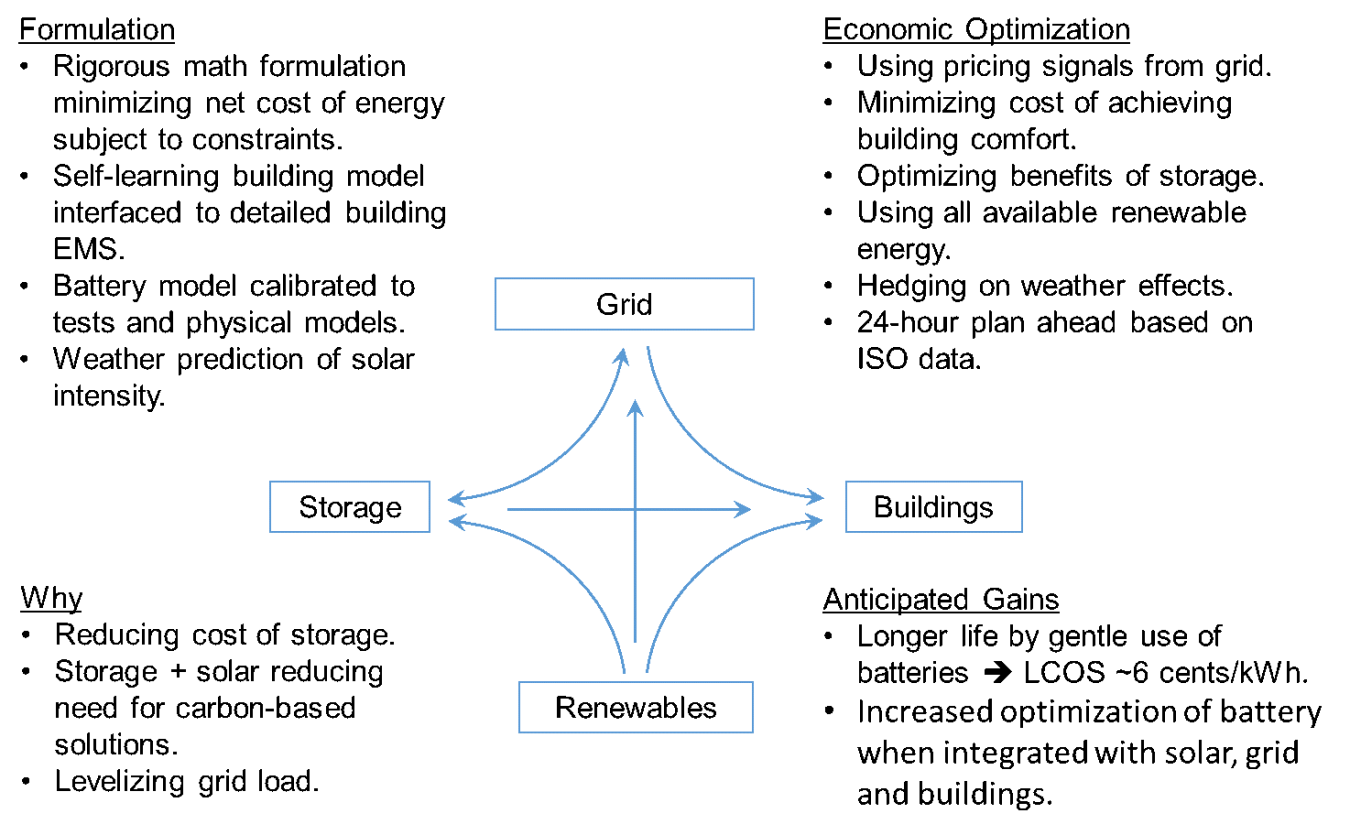Lead Performer: Battery Informatics Inc. – Seattle and Poulsbo, Washington
November 7, 2017
More value by increased flexibility in battery operation when integrated with advanced optimization of batteries, buildings, and grid.
Lead Performer: Battery Informatics Inc. – Seattle and Poulsbo, Washington
Partner: University of Washington – Seattle, WA
DOE Total Funding: $149,937
Project Term: June 12, 2017 – March 11, 2018
Funding Type: Small Business Innovation Research Phase 1 Release 2
Project Objective
Battery Informatics Inc. (Bii) will improve the value of Li-ion batteries using software to control how the batteries are operated by changing the batteries from conservatively operated devices to managed assets. The battery value is improved in two ways: a) longer battery life and b) more effective use for stacked services. A combination of data-driven and physical models is being tried to compute the cost of battery degradation. The approach will be deployed for both fresh batteries from the factory and used batteries from hybrid buses.
This solution is built on four technologies from the University of Washington:
- Battery performance models
- Battery health diagnostics
- Energy management models for buildings
- Economic grid optimization algorithms
Phase 1 will show the feasibility of major gains in battery value when used in combination with solar and building management. Phase 2 will include development, integration, testing and pilot deployment for a combination of solar, buildings and grid connectivity.
Project Impact
Bii’s software will manage the batteries gently when charged with solar energy and more aggressively when the grid provides high rewards; e.g., for frequency regulation. For Li-ion-phosphate (LFP) batteries, we expect to reduce the levelized cost of storage from about 8 cents/kWh to 6 - 7 cents/kWh; i.e., a 12.5% to 25% improvement. Additional value will be gained from optimized use in battery operation for stacked services.
This is a joint project with the Solar Energy Technologies Office.
Contacts
DOE Technology Manager: Marina Sofos, Sven Mumme
Lead Performer: Bjorn Frogner, Battery Informatics Inc.
Related Publications
- Jesus E. Contreras-Ocana, Miguel A. Ortega-Vazquez, Baosen Zhang. “Participation of an Energy Storage Aggregator in Electricity Markets,” accepted for publication in IEEE Transactions on Smart Grid.
- Jesus E. Contreras-Ocana, Mushfiqur R. Sarker, and Miguel A. Ortega-Vazquez. “Decentralized Coordination of a Building Manager and an Electric Vehicle Aggregator,” accepted for publication in IEEE Transactions on Smart Grid.
- Jesus E. Contreras-Ocana, Miguel A. Ortega-Vazquez, Daniel Kirschen, Fellow, and Baosen Zhang. “Tractable and Robust Modeling of Building Flexibility Using Coarse Data.” IEEE Transactions on Smart Grid, October 2016.
- Mushfiqur R Sarker, Matthew D Murbach, Daniel T Schwartz, Miguel A Ortega-Vazquez “Optimal operation of a battery energy storage system: Trade-off between grid economics and storage health.” Electric Power Systems Research, 342-349, Volume 152, 2017.
- M. Lawder, B. Suthar, P.W.C. Northrop, S. De, M. Hoff, O. Leitermann, M. L. Crow, S. Santhanagopalan and Venkat R. Subramanian, "Battery Energy Storage System (BESS) and Battery Management System (BMS) for Grid-scale applications", Proceedings of IEEE, 102(6), 1014-1030, 2014.

